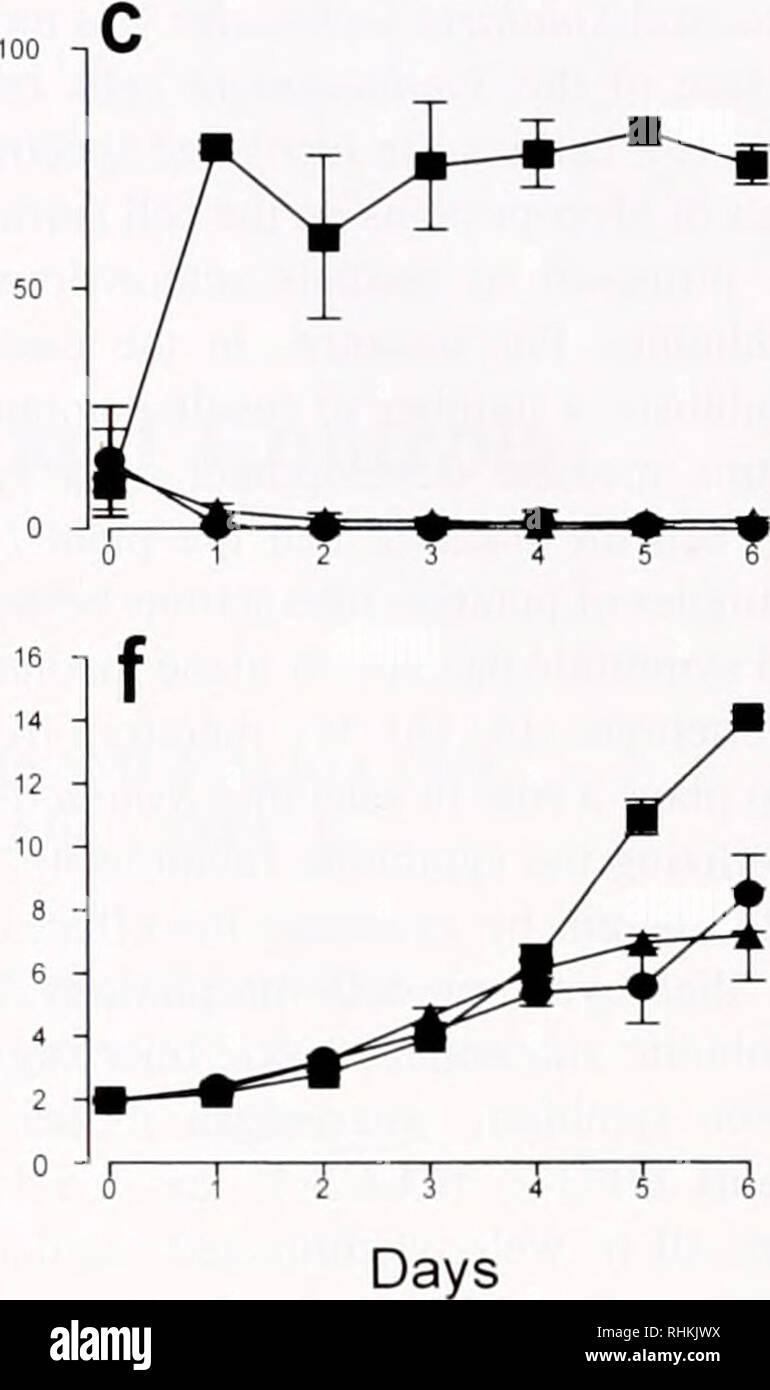. The Biological bulletin. Biology; Zoology; Biology; Marine Biology. II 5 3 3 1 Days Figure 1. The percentage of motile-form cells (a-c) and growth (d-f) of three Symbiodinium strains (CS-156, JCUCS-1. and P083-2) in the presence of two concentrations of the carbohydrate-binding lectin SLL-2. Circles and triangles represent 100 and 10 /j,g ml"' of SLL-2, respectively; squares are the control. Each data point represents the percentage of motile-form cells out ol the lotal cells counted (>400) for each observation period (a-c). Cell growth was monitored by in vivo chlorophyll a fluoresc

Image details
Contributor:
Library Book Collection / Alamy Stock PhotoImage ID:
RHKJWXFile size:
7.2 MB (132.6 KB Compressed download)Releases:
Model - no | Property - noDo I need a release?Dimensions:
1217 x 2054 px | 20.6 x 34.8 cm | 8.1 x 13.7 inches | 150dpiMore information:
This image is a public domain image, which means either that copyright has expired in the image or the copyright holder has waived their copyright. Alamy charges you a fee for access to the high resolution copy of the image.
This image could have imperfections as it’s either historical or reportage.
. The Biological bulletin. Biology; Zoology; Biology; Marine Biology. II 5 3 3 1 Days Figure 1. The percentage of motile-form cells (a-c) and growth (d-f) of three Symbiodinium strains (CS-156, JCUCS-1. and P083-2) in the presence of two concentrations of the carbohydrate-binding lectin SLL-2. Circles and triangles represent 100 and 10 /j, g ml"' of SLL-2, respectively; squares are the control. Each data point represents the percentage of motile-form cells out ol the lotal cells counted (>400) for each observation period (a-c). Cell growth was monitored by in vivo chlorophyll a fluorescence measurement (d-f). All data are given as the means ± standard deviation of triplicate wells. Symbiodinium strains P083-2 and JCUCS-1 were from culture stocks maintained at the Marine Biotechnology Institute (MBI), and CS-156 was obtained from the Commonwealth Scientific & Industrial Research Organization (CSIRO). The culture was spread on agar plates (IMK liquid medium, Wako pure chemical + 1.2 % agar) with a glass rod. then the Synibiotliniuni colonies, formed apart from bacterial colonies, were picked up with sterilized needle and transferred to sterilized liquid IMK medium. They were initially diluted (20.000 cells ml1) with the medium and transferred to 24-well flat-bottom plates (ultra-low protein binding; 3473, Costar). Following acclimation for 24 h (25 :C, 30 /imol photon m : s '. 12:12 light:dark cycle). Snihioiliniiiin cells were confirmed to be in a diel motile phase (more than 70', ) prior to SLL-2 addition. A solution (500 /nl) of SLL-2 (4) tin 8 mA/ Tris-HCl prepared with 60% seawater, sterilized by 0.2 /xm filtration, pH 7.6) was added to the culture to provide a final concentration of SLL-2 of 100 or 10 /xg ml '. Control reactions were prepared by mixing equal volumes of the same seawater and buffer as above but in the absence of SLL-2. The swimming behavior and cell forms were observed under an inverted microscope (1X70, Olympus) daily between 9 and